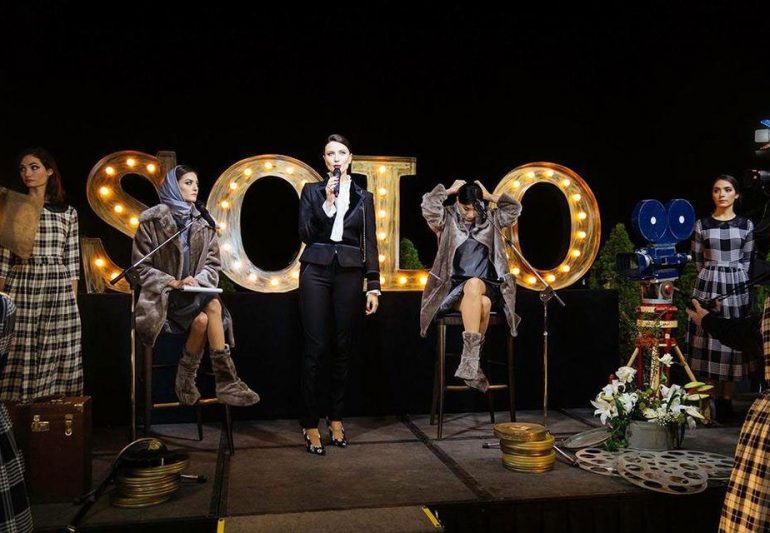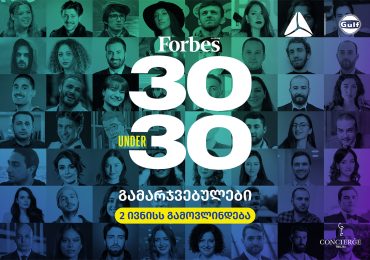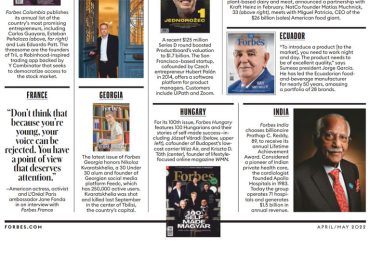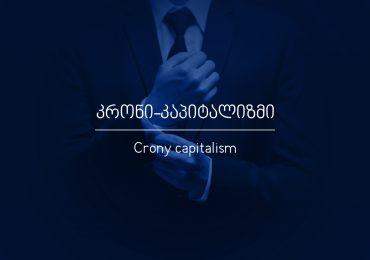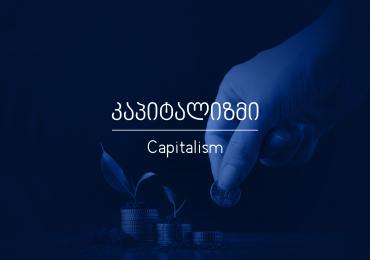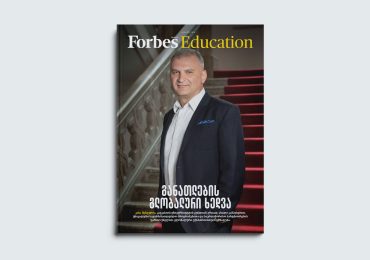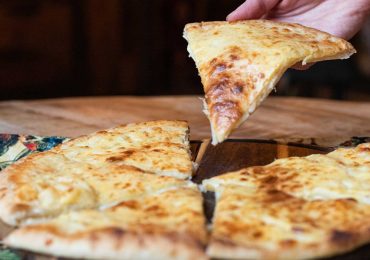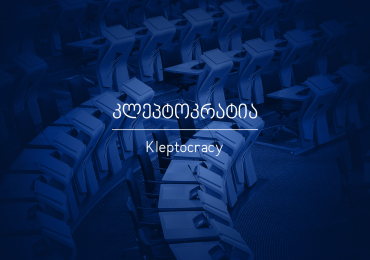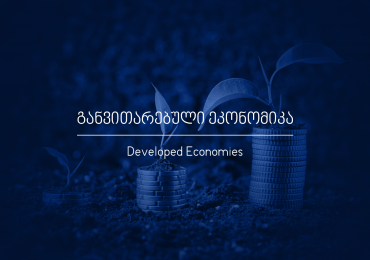From those tiny sunglasses seen on just about every celebrity to cover-rocking distressed denim outfits, Georgian designers have been setting major micro-trends lately. How big is Georgian fashion right now? Well, Tbilisi features two fashion weeks to accommodate its growing number of designers wanting to present to the international visiting crows of press, buyers, and influencers. We start our series on emerging Georgian fashion industry with the 18th edition of Tbilisi Fashion Week.
Dedicated to the beloved 1960’s Georgian actress Bela Mirianashvili, the grand opening took place high above the city at the spectacular terraces of the Funicular restaurant. Guests were greeted by models in modest monochrome dresses evoking nostalgia for a bygone era of cinema and a slower pace of pre-digital life. Fashion week founder Tako Chkheidze spoke eloquently about art and fashion not as perpetually transient frenetic trends, but as cultural forces leaving a lasting influence. By choosing to dedicate the events to a style icon from a period of Soviet censorship and scarcity, organizers highlighted the creative spirit that has always prevailed in Georgia! Such an intro was perfect for the week’s agenda focused on eco fashion.
The spring-summer 2019 collections were presented at the Ghvinis Ubani, a former Wine Factory turned multifunctional arts space, with several noteworthy locations such as the Museum of Modern Art and Chaikana Bazar serving as additional stages. In place of the conventional catwalk the runway was converted in an attractive pasture of synthetic grass to highlight the theme: “We must take care of nature.” Designer Lasha Jokhadze opened the show with an unusual theatrical presentation of his sophisticated all-black evening wear collection. His models were arranged lying down as the music started, they helped each other rise to their feet and walked around hand-in-hand.
Designer Tatia Korsava was a winner of the Tbilisi Fashion Week talent competition last season with a menswear debut inspired by medieval arts and neo-expressionist motifs in paintings by Merab Abramishvili. She made a strong highly-anticipated comeback with a post-apocalyptic collection reflecting modern ecological threats. Models wore protective trench coats, rubber suits, military jumpsuits and gas masks. Korsava playfully challenged gender norms, pairing ragged menswear with feminine glossy pleather waist-cinching bodices, bird-print silk blouses, and see-through mesh shirts.
Another gender-bending twist on proportions and silhouette came from the Russian brand 1377. It re-conceptualized menswear staples with inclusion of mixed textures and elements typically reserved for women or children: flower appliques, flowing capes, and lurex tights. Even the lapti¸ the quintessential Russian peasant tree bark shoes, felt authentic in this well-thought-out presentation.
Designers Luba Makarenko and Keti Chkhikvadze chose more art-driven, colorful, and playful themes for their collections. Makarenko’s label SAYYAwas inspired by the work of Henri Matisse and the “bright emotions, beauty, and individuality” of life in the 1980’s. She wants the girls of today to shine in her signature dresses topped with romantic gaucho hats.
Keti Chkhikvadze also drew inspiration from the decade of big hair, bigger shoulders and biggest dreams. Models strutted in cork platform shoes, with impossible-to-miss accessories like belts and bags with sequins, bright gemstones and chains. The collection is playfully graceful with robust fabrics creating bold forms and layers in leather, cotton with eyelets, silk and tulle. These looks are sure to be spotted at Coachella next year!
Designer Lasha Devdariani staged one of the most memorable off-site shows of the week at the Chaikhana Bazar Café. The models, channeling a well-traveled 1920’s woman in her boudoir, were seated in elegant poses against the backdrop of traditional rugs and tapestries. The gorgeous, sumptuous collection was inspired by Central Asian, East Asian, and Georgian textiles, giving old Silk Road materials a new life with contemporary styling. This is characteristic of Devdariani’s work that is known for mixing unique and vintage fabrics into one-of-a-kind pieces.
Throughout the entire week, the Ghvinis Ubani art space overflowed with excitement and creative energy. Between shows, guests could visit adjacent showrooms to discover more local fashion startups, initiatives and educational programs. Approaching its 20th anniversary milestone, Tbilisi Fashion Weekproves its commitment to helping new talent thrive and innovate domestic textile and apparel industries. With such progressive passion behind it, it won’t take long for the world to discover other Georgian style success stories and learn a few Georgian names beyond Demna Gvasalia.
დატოვე კომენტარი

